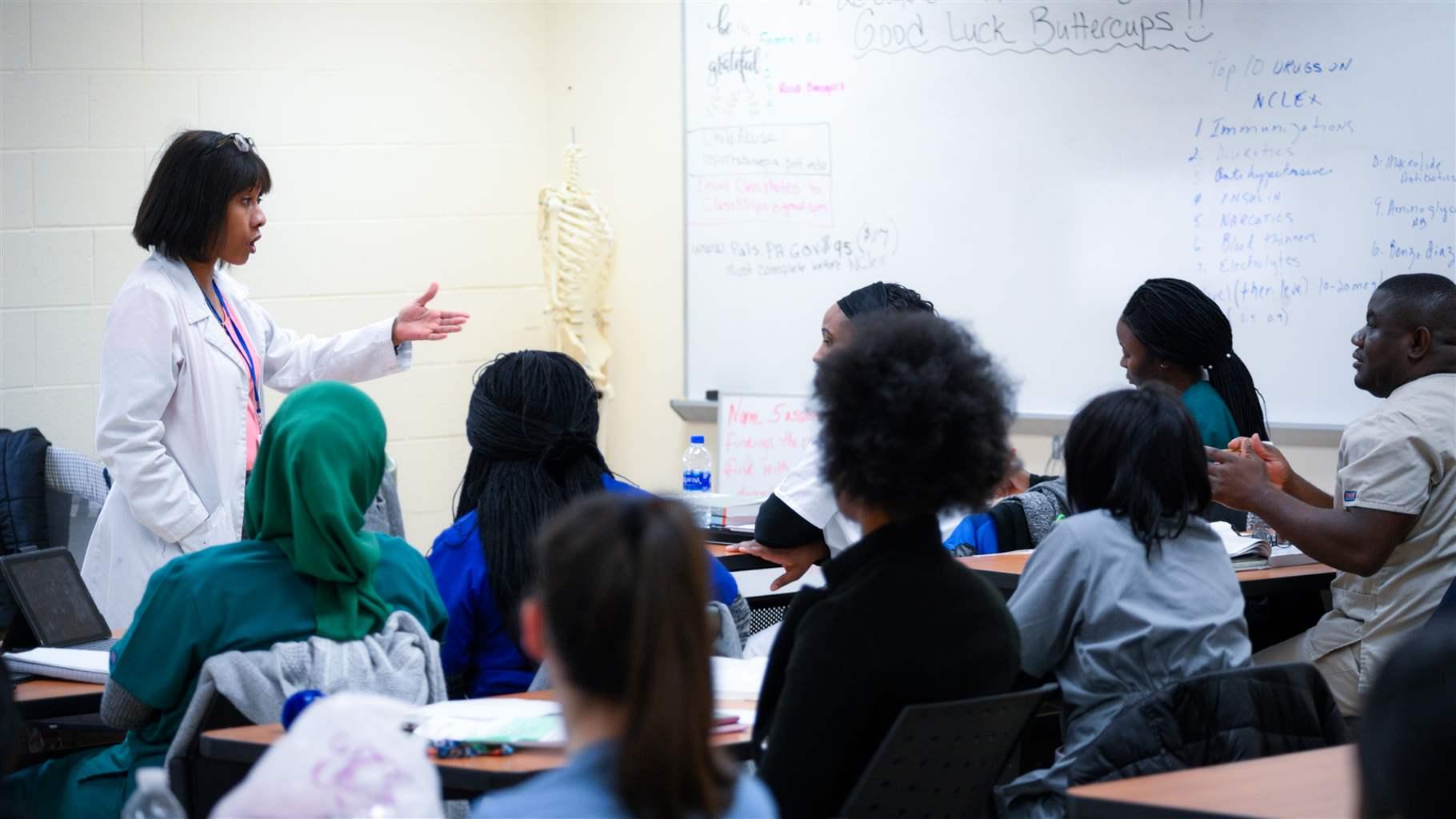Clinicians Can Boost Suicide Care for Pregnant and Postpartum Patients
Georgia awareness campaign highlights efforts to identify risk and support prevention

With suicide rates rising in the United States, communities must use every tool available to identify people at risk so they can be connected to the care they need. Earlier this year, Georgia Public Broadcasting (GPB) worked directly with health care providers in the state to help increase suicide risk screening for pregnant and postpartum individuals, a particularly high-risk group. According to one study, 9% of women of childbearing age who died by suicide over the decade leading up to 2019 were pregnant or recently postpartum.
The network of public television and radio stations launched a statewide mental health and suicide prevention public awareness campaign to promote access to resources for preventing suicide and treating suicidal thoughts and behaviors. This effort, supported by The Pew Charitable Trusts, included community engagement activities specifically focused on suicide risk in pregnant and postpartum people.
To target front-line practitioners directly, GPB partnered with the Mercer University School of Medicine’s Center for Rural Health and Health Disparities and the Georgia Rural Health Innovation Center to equip current and future health care providers to recognize and address suicide risk in the pregnant and postpartum population. At a workshop focused on perinatal mental health, medical students and a broad range of clinicians who regularly interact with pregnant and postpartum patients came together for specialized trainings on how to identify symptoms of mental distress and suicidality, a broad set of signs of suicide risk. Participants discussed best practices for implementing prevention efforts, including evidence-based practices on risk screening and referral protocols for follow-up care.
“We are thrilled with the turnout and final product for our perinatal mental health training, which included a primary component on identifying and assessing suicide risk in pregnant and postpartum women,” said Dr. Jennifer Barkin, executive director of the Center for Rural Health and Health Disparities.
“Including in-person and online attendance, the workshop reached about 200 people, mostly health care workers. All clinicians or clinicians-in-training in attendance received detailed information on how to identify the factors that increase suicide risk and how to assist those expressing thoughts of self-harm.
“Considering that these providers will touch the lives of many patients, we believe the impact will be impressive and difficult to quantify,’’ Barkin said. “This type of deep dive into preventive strategies for mental wellness should be available for all clinicians.”
GPB also broadcast of a series of videos, featuring experts from across the state, that promoted mental health and suicide prevention resources with content focused on mothers, teenagers, and young adults. These videos were accompanied by articles written by health journalists on suicide prevention and maternal health.
Leaders at the public broadcaster had seen a need for better support for pregnant and postpartum residents of the state; Georgia has one of the highest maternal mortality rates in the country. In fact, data from the Georgia Department of Public Health (DPH) shows that between 2018 and 2020, up to 19% of pregnancy-related deaths—deaths during pregnancy or within one year of pregnancy—were linked to mental health conditions. And all were determined to be preventable. One of the contributing factors, according to the DPH study, was that providers did not use standardized assessment tools for postpartum depression and suicide.
"When we saw the data about Georgia’s high maternal mortality rate, we were inspired to use our platform to do something,” said Emmalee Hackshaw, vice president for community engagement at GPB. “We can encourage more women to ask for help and give the people around them—especially health care providers—the tools to offer that help. That is what this campaign was all about, and we are so pleased with its success."
Georgia is not unique, and this approach can be replicated elsewhere. Research shows there is an urgent public health need throughout the U.S. to address suicide risk among those who are pregnant or post-partum. Data on 1,018 pregnancy-related deaths among residents of 36 states, including Georgia, found that 23% were due to mental health conditions, including suicide and overdose. Such conditions were the overall leading cause of pregnancy-related death.
Health care providers have a key role to play, because people who may be considering suicide frequently connect with the health care system at prenatal, postpartum, and early pediatric appointments, presenting numerous opportunities for risk screening and intervention. There are proven screening tools and practices to successfully identify suicide risk, and providers need to be trained to use them so this population can be connected to lifesaving care.
Allison Corr works on The Pew Charitable Trusts’ suicide risk reduction project.
If you or someone you know needs help, please call or text the Suicide and Crisis Lifeline at 988 or visit 988lifeline.org and click on the chat button.










